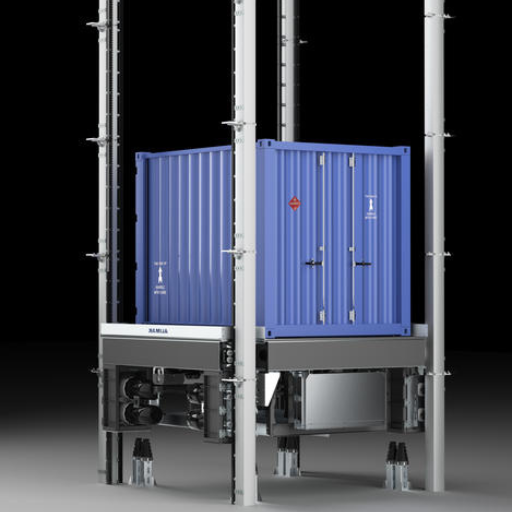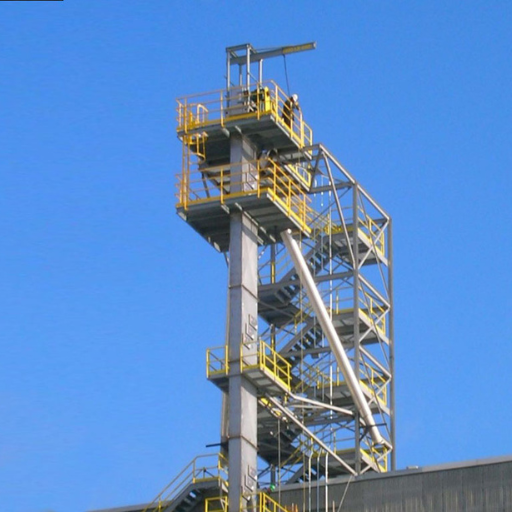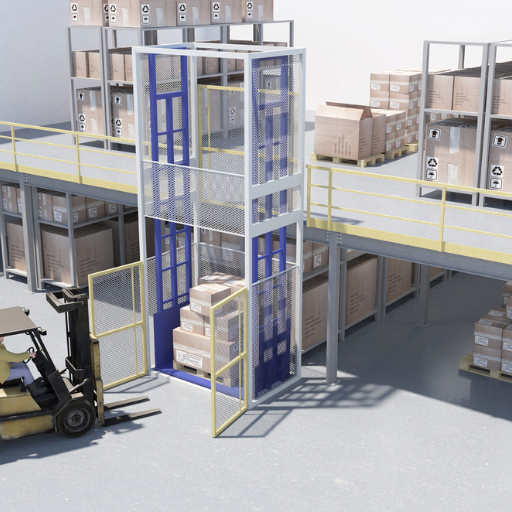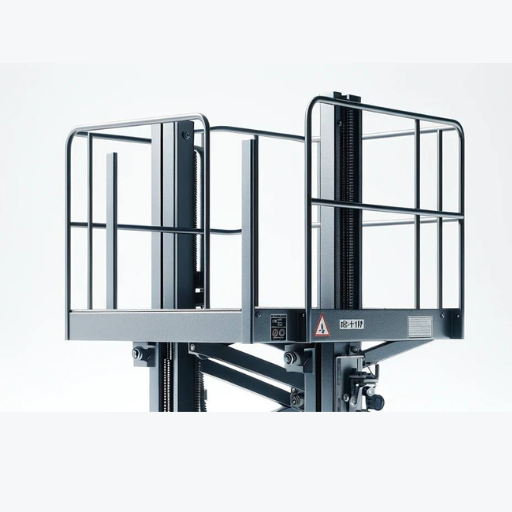Welcome to our comprehensive guide on industrial freight elevators. In this article, we aim to provide you with detailed insights into the world of freight elevators, their significance in various industries, and how they operate. Whether you are a business owner looking to improve your warehouse efficiency, an engineer exploring the technical specifications of these machines, or simply curious about industrial logistics, this guide will cover all the essential aspects. We will delve into the types of freight elevators, their applications, safety features, maintenance requirements, and the latest technological advancements in the field. By the end of this article, you will have a thorough understanding of what makes industrial freight elevators an indispensable asset in today’s commercial and industrial environments.
What Are Industrial Elevators and How Do They Work?
What is an Industrial Elevator?
An industrial elevator, sometimes referred to as a freight elevator, is a mechanical device used to move heavy goods and materials vertically within a building. Industrial elevators do not perform like passenger-type elevators because they are designed for heavy loads and come with strong platforms, robust construction materials and powerful lifting systems that ensure safe movement in commercial or industrial settings. Hydraulic systems or traction systems may be used by these types of elevators depending on the design and requirements of the building.
How Do Industrial Freight Elevators Work: Mechanics And Engineering
Industrial freight lifts can be either hydraulic based or rely on traction techniques. The hydraulic design makes use of a piston system which pushes the lift up & down. This system uses fluid pressure allowing for smooth controlled motion that is ideal for mid-rise buildings with its limitations on travel height. On the other hand, traction freight lifts utilize ropes and counterweights as their moving parts. A hoist rope loop that revolves around a sheave driven by an electric motor attaches to the elevator car. Counterweights are necessary such that this system could be seen in tall edifices as it enables them to have efficient design capabilities. These two also consist of various safety measures like emergency brakes plus overload sensors making sure they are operated safely at all times. Moreover, there have been advance in technology in form of smart control systems that optimize performance as well as energy consumption among modern day cargo-lifts.
Industrial Lift Applications In Different Industries
Industrial elevators are crucial across several sectors due to their ability to handle heavy loads and promote effective vertical transportations They play an important role in manufacturing organizations moving raw materials, components, and finished products between floors thus streamlining production activities involved production process Warehouses have industrial lifts through which they can ferry items between levels; hence they significantly expand storage capacities and improve stock management.
Construction industry uses commercial elevators to convey construction materials such as bricks plus mortars and people hence speeding up project schedules and improving safety by reducing manual lifting. The mining sector also employs industrial elevators to bring personnel as well as extracted materials from the underground areas to the ground.
Consider the following technical parameters when justifying these applications:
- Load Capacity: 1,000 kg up to over 10,000 kg; can undertake tasks that are very tough in nature.
- Platform Size: Varies between 1.5m x 1.5m and 3m x 3m depending on facility requirements.
- Lift Speed: Travel speed should typically be between 0.5 m/s to 1.5 m/s so as not to endanger passengers needlessly.
- Power Source: These will generally require three-phase power sources (e.g., 380V, 50Hz), which can accommodate large loads of work.
- Safety Features: Other features include emergency brakes, overload sensors, and automated control systems ensuring that it is safe and efficient.
These parameters ensure that industrial lifts provide reliable and efficient service across various industries in order to meet their demand.
How to Select the Right Freight Elevator for Your Needs
Dimensions, Capacity and Load
To begin evaluating the capacity and size requirements of a freight elevator, start with determining the maximum load that it will have to carry. This includes considering all items that will be moved together with people. Peculiarly, loading capacity are typically between 1,000 kg and over 10,000 kg. After that, you should determine the size of the cargo or equipment so as to match it up with the platform size—typical sizes range from 1.5m x 1.5m to 3m x 3m. Consider also how much space there is in your facility for a freight elevator. Determine lift speed criteria depending on efficiency and speed levels one wants to achieve; normal speeds range within 0.5 m/s and 1.5 m/s only. Finally, ensure that the selected lift meets safety regulations such as emergency brake systems overload sensors as well as automated control systems among others which are essential for safe operations.
Traction Elevators versus Hydraulic Elevators versus Rack-and-Pinion Elevators
When selecting an appropriate type of goods’ lifts one must understand distinctions between traction elevators, hydraulic lifts and rack-and-pinion elevators:
- Traction Elevators: They are powered by electric motors that drive traction cables and counterweight systems thus making them more efficient in high-rise buildings with faster speeds (up to about 2.5 m/s). Traction elevators ride smoothly and save energy yet cost more for installation and maintenance.
- Hydraulic Elevators: Here an elevator car is pushed up or down by a hydraulic ram. These are good for low rise buildings (approximately five-seven floors) moving at a peak speed of approximately one meter per second.The cost of these elevators is generally lower while they require less attention though they move slower than hydraulic ones consuming comparatively more power.
- Rack and Pinion Elevator: A gear pinion engages into a rack to lift or lower an elevator car. They are suitable for industrial sites and construction places because of their robustness and ability to handle high loads in rough conditions. While they are good at carrying weights and long-lasting, these elevators tend to be noisier and have a less smooth ride than hydraulic ones.
To identify which kind of lift will work best for a given situation, consider the speed and efficiency of traction elevators, cost effectiveness of hydraulic ones, and ruggedness of rack-and-pinion types.
Inspection of Security Devices
Apart from that there are several other key factors one should bear in mind when evaluating safety features as well as standards concerning elevators. Many current lifts come with various safety features ensuring passenger protection:
- Emergency Brakes: These automatically trigger whenever an elevator begins plummeting down too quickly so as to prevent any possible accidents that may prove fatal.
- Backup Power: Most often have back up power systems enabling them to operate or move to the nearest floors in case there is an electricity blackout.
- Door Sensors: Advanced sensors ensure that the doors of the elevator do not close if something or someone is blocking the entrance increasing security measures for passengers.
- Communication Systems: Almost all elevators contain emergency communication systems through which passengers can call for help from building guards or emergency services once stuck up there.
- Overload Sensors: Therefore it makes sure that it doesn’t exceed its weight limit thus helping you avoid putting unnecessary pressure on it since this could even cause mechanical breakdowns.
Meeting the requirements of local and global standards is essential, and this means complying with regulations laid down by organizations such as ASME or ISO. Proper maintenance work and routine inspections are also pivotal for guaranteeing that all safety devices are in good working condition while also meeting safety provisions. When building managers know how to apply them, it will decrease the chance of accidents happening at their premises as well as increasing user’s general security.
Installation and Maintenance: Ensuring Reliable Service for Your Freight Elevator
Installation of Industrial Freight Elevators
- Site Assessment and Planning: The installation process of freight elevators starts with a complete site assessment to identify the most suitable location and configuration that suits the elevator’s functions. This will involve measuring the space, evaluating load requirements, and planning the structural support needed for the elevator system.
- Choosing the Right Elevator System: Select an elevator system based on site assessment and project requirements that meets facility load capacity, dimensions, and operation needs. Hydraulic, traction or machine-room-less are some of these available options.
- Structural Preparation: Pre-installation processes include reinforcing floors and walls of buildings as well as making electrical connections. To house an elevator, a dedicated hoistway or shaft is constructed.
- Installing the Elevator Components: Core components – including hoistway, cab, control systems among others are installed in compliance with manufacturer specifications; this requires precision such that all parts are correctly aligned and firmly fastened.
- Integration and Testing: After installation, integration into building systems – electrical fire safety communication (to mention just a few) takes place while rigorous testing which ensures that smooth working is achieved by it without breaching any safety standard occurs.
- Final Inspection and Certification: The last step involves inspection by licensed inspector who confirms whether it meets local building code requirement among other safety rules. After approval is obtained then Certificates are issued hence it can start to be used for intended purposes.
- Ongoing Maintenance:The best way to ensure long-term reliability and safety of freight elevators is through regular maintenance. It includes planned inspections where parts may need to be lubricated adjusted or replaced if worn-out.
By following these steps, building operators can ensure a safe, efficient, reliable installation of industrial freight elevators that meet all regulatory requirements as well as their operational needs.
Tips for Routine Maintenance That Prolongs Life Of Your Elevator
Regular Inspections: Schedule routine inspections so you can spot potential problems before they become major ones. Examine the cables, pulleys, electrical systems and mechanical components frequently.
- Lubrication: Make sure that all moving parts are well lubricated to decrease friction and wear. Important places to lubricate include guide rails, rollers and bearings.
- Component Cleaning: Keep the hoistway, tracks and cab clean from debris and dirt. Accumulated dirt can interfere with smooth operation of elevator’s components causing them to wear out prematurely.
- Alignment Checks: Check whether the elevator is correctly aligned. Misalignment may cause over-wearing of components making them less efficient.
- Control System Updates: Periodically check and update control systems so as to keep them running on latest software/firmware; this is necessary for optimal performance and safety compliance.
- Safety Feature Testing: From time to time test safety features like emergency brakes, alarms or door sensors to know if they are functioning properly; these are very crucial especially for passenger or operator safety.
- Cab and Floor Maintenance: Maintain good condition of your elevator’s cab and floors. Regular cleaning inside prevents damage leading to a comfortable user experience.
Technical Parameters to Monitor:
- Cable Tension: Ensure that cable tensioning is done accordingly in order for smooth safe operation of an elevator. Tension should be checked or adjusted according to manufacturer specifications
- Electrical System Voltage: It is important that voltage levels remain within the specified range so as not result into electrical failures
- Hydraulic Fluid Levels (for hydraulic elevators): Adequate fluid levels must be maintained in order for effective lifting/ lowering action during operations
- Operational Test Loads: Elevator’s performance is tested periodically under various loading conditions to ascertain its capability and dependability.
By adhering to these maintenance tips and monitoring the technical parameters, elevator operators can significantly extend the lifespan of their elevators and ensure consistent performance.
Understanding Different Types of Construction and Industrial Elevators
Elevators for Specialty Applications: Construction Hoists, Material Hoists, and Transport Platforms
Specialty elevators like construction hoists, material hoists and transport platforms have a great significance in the construction and industrial sectors. These are meant to safely take human beings and materials on the sites.
Construction Hoists are temporary elevators which are primarily used to get workers and materials from one level to another in a building under construction. They usually run on the outside of a building. They have also been designed with an ability to carry heavy objects as well as comply with strict safety requirements.
Material Hoists are mainly used to lift or lower goods quickly. They can be mostly found in industries where there is fast movement of items. Such hoists have been constructed with weighty loads in mind; hence they accommodate different sizes and types of things.
Transport Platforms combine construction and material hoist functions, making them adaptable for various uses at building sites. They can move very heavy loads, equipment and people during construction operations that need efficiency and security.
The use of such specialty lifts enhances job site productivity while reducing accidents during work by facilitating effective implementation of complex activities.
Benefits of GEDA Rack-and-Pinion Elevators
GEDA’s rack-and-pinion elevators offer several advantages that meet the demanding needs of construction and industrial environments:
- High Load Capacity: These lifts are designed for handling substantial weights thus ensuring smooth transfer of bulky materials including personnel within a given area. The maximum load capacity is 7,700 pounds (3,500 kg).
- Strong Safety Features: To ensure maximum protection for both operators and cargo GEDA lifts come with a number of safety devices including overspeed governors, emergency stop buttons as well as safety brakes.
- Versatility: The lifts offered by GEDA can be used for both people transport purposes as well as carrying goods thereby becoming an efficient solution for multidimensional worksites.
- Ease of Installation: Assembly and disassembly of GEDA elevators are simple processes making the company’s products especially beneficial during installation, dismantling and relocation periods.
- Durability and Reliability: Built with high-quality materials, these lifts can withstand harsh atmospheric conditions thus assuring long-time operativeness.
- Precise Control and Efficiency: The state-of-the-art control systems in GEDA rack-and-pinion elevators enable smooth movements that increase overall effectiveness in a site.
- Low Maintenance: These lifts require less maintenance due to their strong design as well as top notch engineering hence minimized operational expenditures in future.
At large, after construction or industrial areas have adopted GEDA rack-and-pinion lifts for operations, they experience notable improvements such as better safety measures and higher cost-effectiveness.
Enhancing Efficiency: Modern Innovations in Freight Elevator Technology
Control Systems and Automation Advancements
Recent control systems and automation techniques have completely transformed the efficiency and reliability of freight elevators. For example, cutting-edge innovations such as new microprocessor-based control panels have enabled precise monitoring and adjustment of elevator functions for optimum performance and safety. Automation technologies also include predictive maintenance and real-time diagnostics, which identify potential issues before they become serious, thus reducing downtime significantly. Furthermore, the integration of Internet of Things (IoT) devices has made it possible for elevators to communicate with central control system hence enabling instant coordinated response that is necessary for their operation. It is crucial to note that these developments are essential in improving productivity as well as enhancing user experience across various sectors.
Energy-Efficient Designs and Green Technologies
In the modern world, energy efficiency characterizes the entire freight elevator technology. While exploring state-of-the-art designs, I stumbled upon some of the manufacturers who began using regenerative drives that capture energy lost during braking so as to use it again. Worth noting is that this innovation not only cuts back on power consumption but also reduces operating costs. Similarly, there are LED lights installed along with standby modes to reduce total energy use in these systems. To minimize environmental impact further, a lot of lifts now utilize sustainable materials in production processes or recyclable components when constructing them. By using these green technologies, freight elevators promote environmental conservation while providing high levels of performance and reliability.
Improving Safety and Reliability Through Modern Innovations
Bettering safety conditions in addition to increasing reliability within freight elevators has never been easier than today under modern innovations developed over time. Based on my analysis about trends currently occurring around me in relation to industry updates, I realized that there are numerous new features aimed at ensuring better safety among manufacturers. These include real-time monitoring systems that detect issues instantly reducing chances of accidents from happening around people using them including passengers or workers involved directly or indirectly inside those lift compartments. Furthermore, improved braking systems alongside advanced door mechanisms are now becoming the norm in most lifts hence guaranteeing smooth as well as safe operations. Also, predictive maintenance involving sophisticated software provides for timely interventions to avoid unexpected downtimes. By leveraging these cutting-edge technologies, we can significantly enhance the overall safety and reliability of freight elevators, delivering peace of mind for users and operators alike.
Reference sources
- Dazen Elevator – The Ultimate Guide to Freight Elevators: This guide dives deep into the dimensions, capacities, and installation processes of freight elevators, offering a thorough overview for anyone interested in understanding these systems better. Read more
- Liberty Elevator – Freight Elevator Essentials: This resource outlines the key distinctions between freight elevators and passenger elevators, focusing on the specific design and operational needs for moving goods and materials. Read more
- Murphy Elevator – Freight Elevator: How They Enhance Warehouse Efficiency: This article highlights how freight elevators contribute to warehouse efficiency, particularly in the transportation of heavy items like machinery, which is crucial for industrial operations. Read more
Frequently Asked Questions (FAQs)
Q: What are industrial freight elevators used for?
A: These types of elevators are used in industries to effectively convey heavy loads, goods and even staff from one level to another. They need to be able to function under heavy duty workloads and this is why they are a necessity in most industries.
Q: How do Alimak industrial elevators differ from other types of industrial lifts?
A: Sturdiness and reliability are the main features that differentiate Alimak industrial elevators from other similar lift systems. They are often referred to as construction hoists because they have been specifically designed for use on construction sites. Durability and safe operation characterize every Alimak elevator.
Q: What are the key features of reliable industrial elevators?
A: Industrial elevators that can be relied upon must provide continuous safe movement of materials and passengers. These may include well-built infrastructure, productive handling abilities, safety devices and minimal downtime. That’s why such vertical transportation units should receive regular maintenance using quality parts.
Q: How can I choose the right service elevator for my industrial facility?
A: In choosing the appropriate service elevator, it is important to consider the weight/volume of materials you will have to transport as well as their frequency of handling at your particular plant. It may be useful if you talk with specialists who know how various access solutions can be customized directly for an industry.
Q: What maintenance is required for industrial freight elevators?
A: Regular inspections, greasing moving parts, checking safety devices and ensuring compliance with all relevant regulations are some of the procedures which should be followed during maintenance service on these freight carriers. Quick maintenance processes guarantee that these machines last long enough without breaking down.
Q: Can industrial elevators be used to safely move personnel?
A: Yes, there are certain types of lifts that allow people along with cargoes go up or down comfortably. Often called passenger lifts- they have additional features put in place to protect people and items while traveling.











